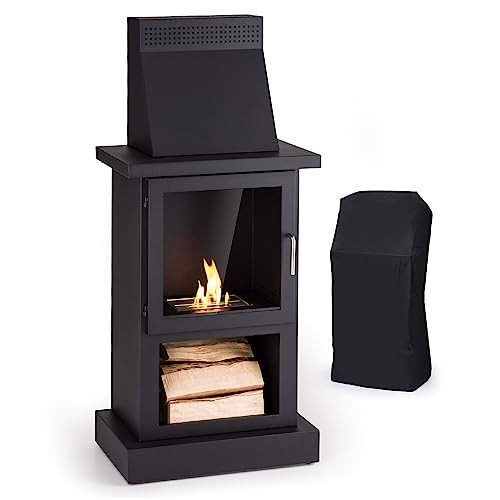8 Tips To Up Your Fireplace Game
The Fireplace: A Warm Embrace of Tradition and Comfort
Fireplaces have been an essential part of human habitation for centuries, acting as a source of heat, a meeting place, and a sign of convenience. While the modern versions might differ remarkably from their ancient forefathers, the attraction of a fireplace withstands. This short article explores the different elements of fireplaces, including their history, function, types, and upkeep, while also dealing with frequently asked concerns.
The Evolution of Fireplaces
Fireplaces date back to ancient times when open flames were used for cooking, heating, and security from wildlife. Over the centuries, fireplaces progressed from basic fire pits to the sophisticated renditions we see today. Here is a short timeline of their development:
- Prehistoric Era: Cavemen used open flames for heat and cooking. Wind and smoke typically blew into homes.
- Middle Ages: Stone and brick fireplaces ended up being common in homes and castles, integrating chimneys to bring smoke outside.
- Renaissance: Elaborately designed mantels emerged, and fireplaces became centers of social interaction.
- Industrial Revolution: Innovations in heating products resulted in a range of designs and performances.
- Modern Era: The introduction of gas, electric, and bioethanol fireplaces offered cleaner options to traditional wood-burning units.
Table 1: The Evolution of Fireplaces
Period
Attributes
Prehistoric Era
Open flames for warmth and cooking
Middle Ages
Stone and brick structures with early chimneys
Renaissance
Ornate mantels, social centers
Industrial Revolution
Varied styles, development of brand-new products
Modern Era
Gas, electric, and bioethanol choices
The Purpose of a Fireplace
Fireplaces serve dual purposes: they offer physical warmth and create an emotional environment. Property owners typically gather around the fireplace to bond, share stories, and enjoy a cozy setting. The glow of a fire can be calming, contributing to a sense of relaxation and intimacy. Beyond individual pleasure, fireplaces also offer functional benefits, consisting of:
- Home Heating: Effective heat source, particularly in cooler climates.
- Increased Home Value: A well-designed fireplace can enhance the visual value of a home.
- Emergency Heating: In case of power blackouts, wood-burning fireplaces can serve as a crucial heat source.
- Visual Appeal: A centerpiece that adds to interior design.
Kinds of Fireplaces
Today, fireplaces can be found in various styles and fuel types, accommodating a diverse range of choices and settings. Here are some common types:
Wood-Burning Fireplaces:
- Traditional fire pits
- Timeless masonry fireplaces
- Require substantial maintenance and chimney upkeep
Gas Fireplaces:
- Available in both direct vent and ventless varieties
- Much easier to utilize and preserve than wood-burning fireplaces
- Offer instantaneous heat with a flick of a switch
Electric Fireplaces:
- Offer associated heat sources without real flames
- Frequently developed to simulate traditional fireplaces
- Ideal for smaller areas and homes without a chimney
Bioethanol Fireplaces:
- Use bioethanol fuel, offering a sustainable option
- Require no ventilation and can be put anywhere
- Safe and simple to keep
Table 2: Types of Fireplaces
Type
Fuel Source
Functions
Upkeep Requirements
Wood-Burning
Wood
High ambiance, heat source
Routine chimney cleaning
Gas
Gas or lp
Instant heat
Minimal, occasional maintenance
Electric
Electricity
Easy setup
Extremely low upkeep
Bioethanol
Bioethanol fuel
Ventless, portable
Low, primarily cleaning
Upkeep and Safety Considerations
Owning a fireplace includes particular duties, specifically concerning its safe operation and long-term upkeep. Here are essential upkeep pointers and security standards:
Maintenance Tips:
- Annual Inspection: Always have your chimney and fireplace examined at least when a year by a qualified service technician.
- Routine Cleaning: Clean out ashes and debris after each use, and guarantee the flue is open before beginning a fire.
- Examine for Cracks: Inspect masonry for cracks or damage to prevent structural problems.
- Use Proper Fuel: Only usage dry, skilled wood for wood-burning fireplaces; do not burn treated wood.
Security Guidelines:
- Install Smoke Detectors: Ensure smoke detectors are functional, testing them month-to-month and changing batteries as required.
- Keep a Fire Extinguisher: Have one neighboring, even if a fireplace is used infrequently.
- Supervise Flames: Never leave a fire ignored, and guarantee children and pets are kept an eye on around the fireplace.
Frequently Asked Questions (FAQs)
1. How can visit this web page link from a wood-burning fireplace?
To decrease smoke, usage dry, experienced wood, and guarantee that your chimney is clean and unobstructed.
2. Is it safe to utilize gas fireplaces throughout a gas leakage?
Never utilize a gas fireplace during a gas leak. Immediately evacuate the area and contact gas services for assistance.
3. Can I set up an electric fireplace myself?
Electric fireplaces are typically simple to install, however it is suggested to seek advice from experts to make sure security and compliance with regional building regulations.
4. What is the best kind of fireplace for small areas?
Electric fireplaces or bioethanol models are typically best for small areas, as they do not need extensive ventilation or structural modifications.
Fireplaces have transcended their original purpose of providing heat to end up being treasured elements of home style and domesticity. They evoke memories of warmth, celebrations, and togetherness while supplying functional advantages that boost modern living. By comprehending the numerous types of fireplaces, their upkeep, and safety practices, property owners can enjoy the classic appeal of this cherished function for generations to come.
